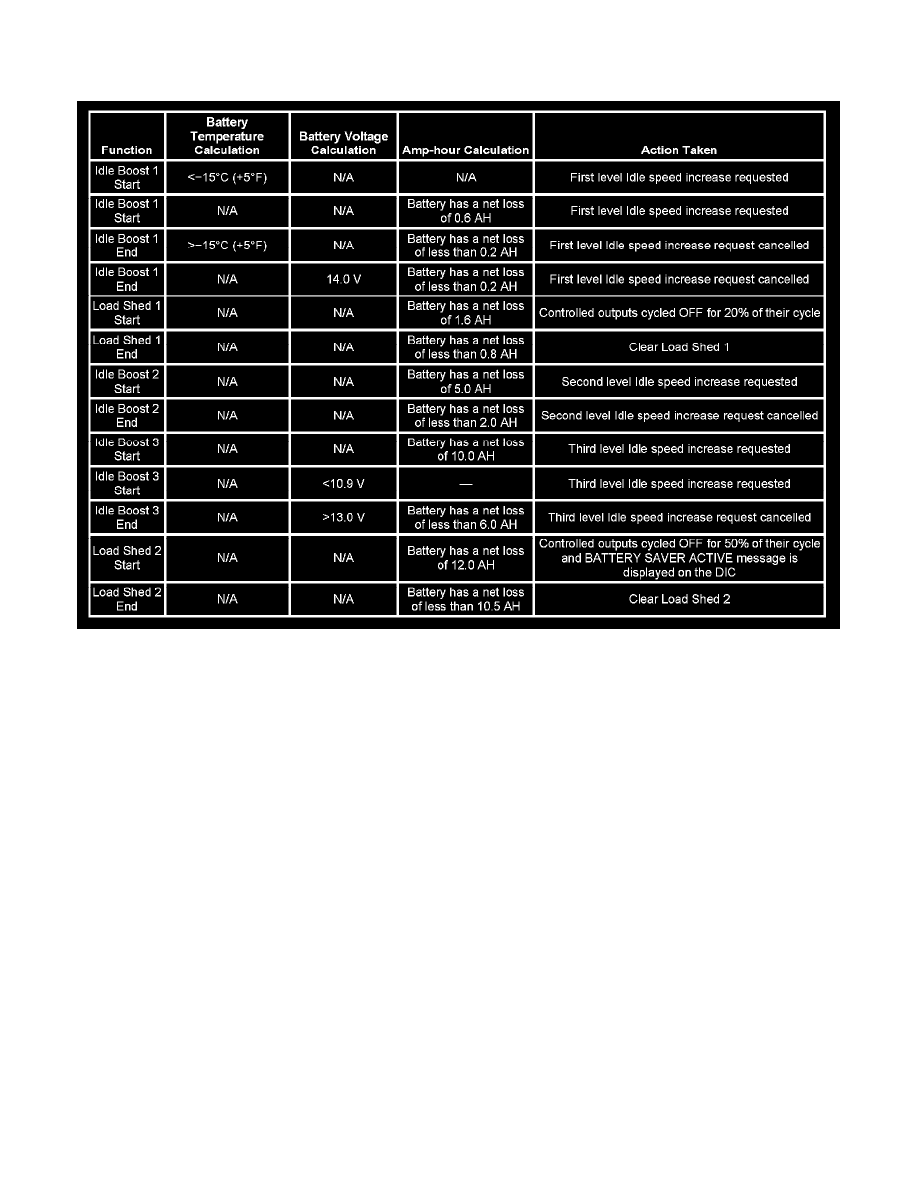SRX RWD V8-4.6L VIN A (2006)

The PMM calculates the discharge rate, or draw, on the battery by making constant measurements and using the measurements to calculate the
discharge rate in amp/hours. If the PMM detects a high current draw from the battery, the PMM institutes steps to control the load.
The PMM will either request an increase in the engine idle speed to the ECM or the PMM will cycle or turn OFF loads, called the load-shed function,
in order to preserve the vehicle electrical system operation. The criteria used by the PMM to regulate this electrical load management are outlined.
Each load management function, either idle boost or load-shed, is discrete. No 2 functions are implemented at the same time.
During each load management function, the PMM checks the battery temperature, battery voltage and amp-hour calculations and determines if the
PMM should implement a different power management function.
Idle Boost Functions
The PMM sends a serial data request to the ECM to increase the idle speed. The ECM then adjusts the idle speed by using a special program and idle
speed ramp calculations in order to prevent driveability and safety concerns. The idle speed boost and cancel function will vary from vehicle to
vehicle and from one moment to another on the same vehicle. This happens because the ECM responds to changes in the inputs from the sensors used
to control the powertrain.
Load Shed Function
The PMM executes the load shed function, by controlling the relay coil of the following devices.
-
The A/C clutch
-
The heated mirrors
-
The heated seats
-
The rear defog
-
The HVAC blowers
DIM Wake-up/Sleep States
The dash integration module (DIM) is able to control or perform all of the DIM functions in the wake-up state. The DIM enters the sleep state when
active control or monitoring of system functions has stopped, and the DIM has become idle again. The DIM must detect certain wake-up inputs before
entering the wake-up state. The DIM monitors for these inputs during the sleep state, where the DIM is able to detect switch transitions that cause the
DIM to wake-up when activated or deactivated. Multiple switch inputs are needed in order to sense both the insertion of the ignition key and the
power mode requested. This would allow the DIM to enter a sleep state when the key is IN or OUT of the ignition.
